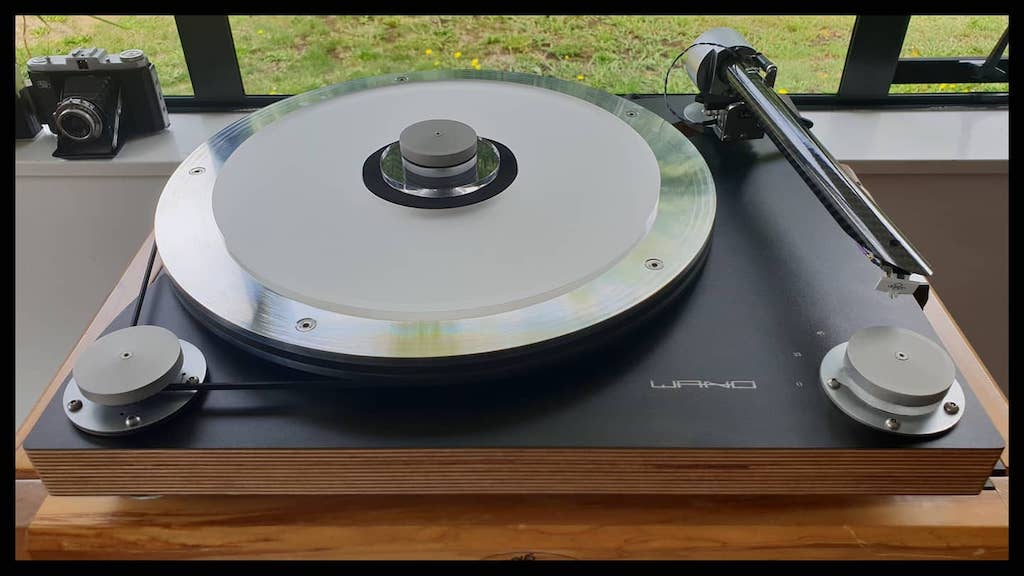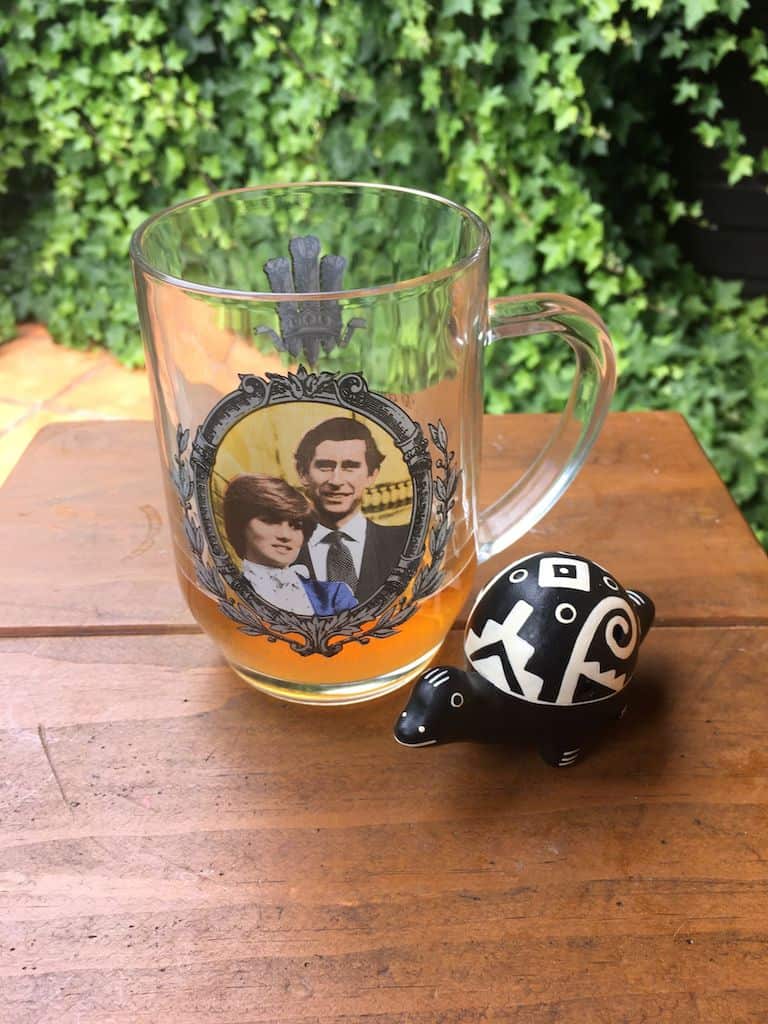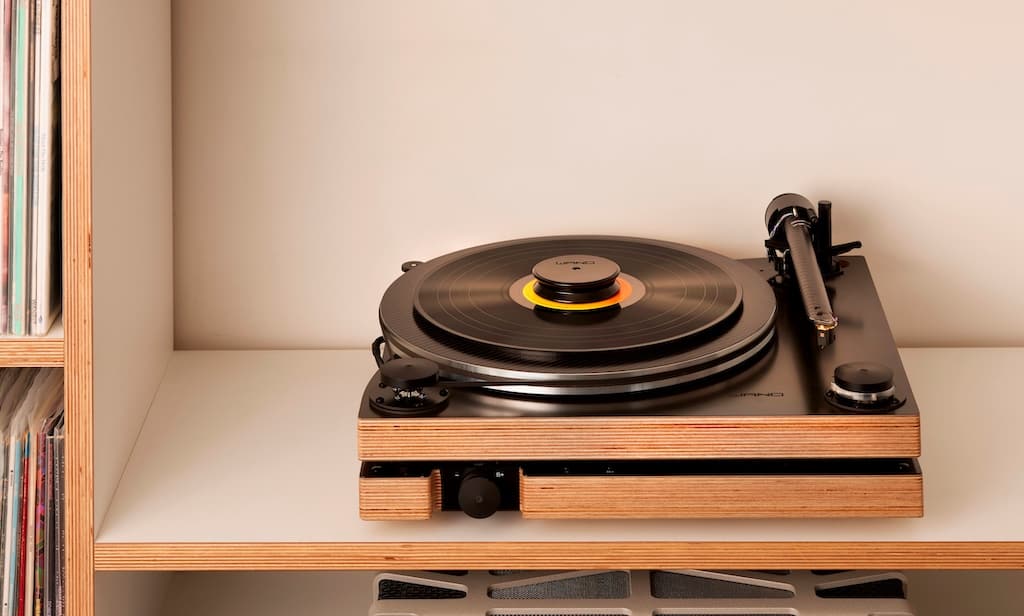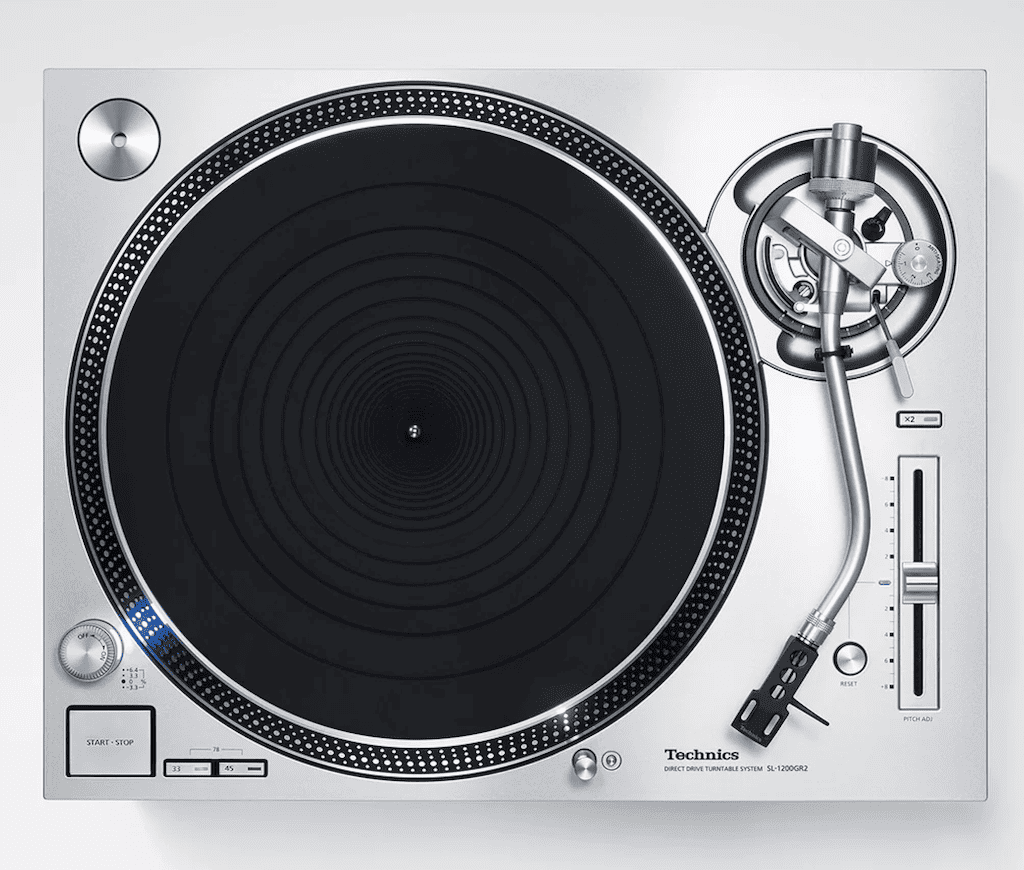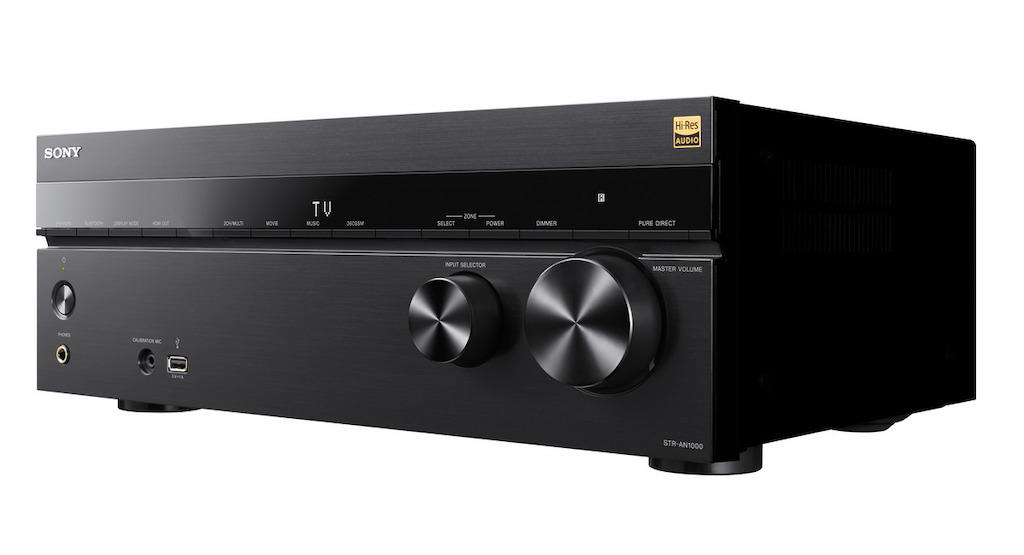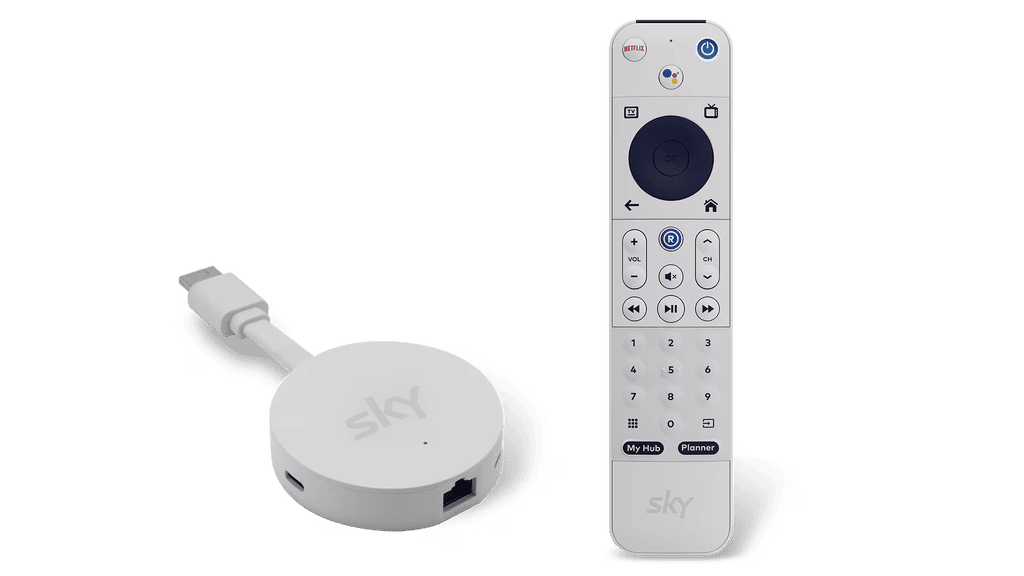Summary
The Wand 14-4 Turntable REVIEW
From $4800
ANDREW BAKER spends quality time with a New Zealand-made turntable that’s both a work of art and an exceptional piece of engineering.
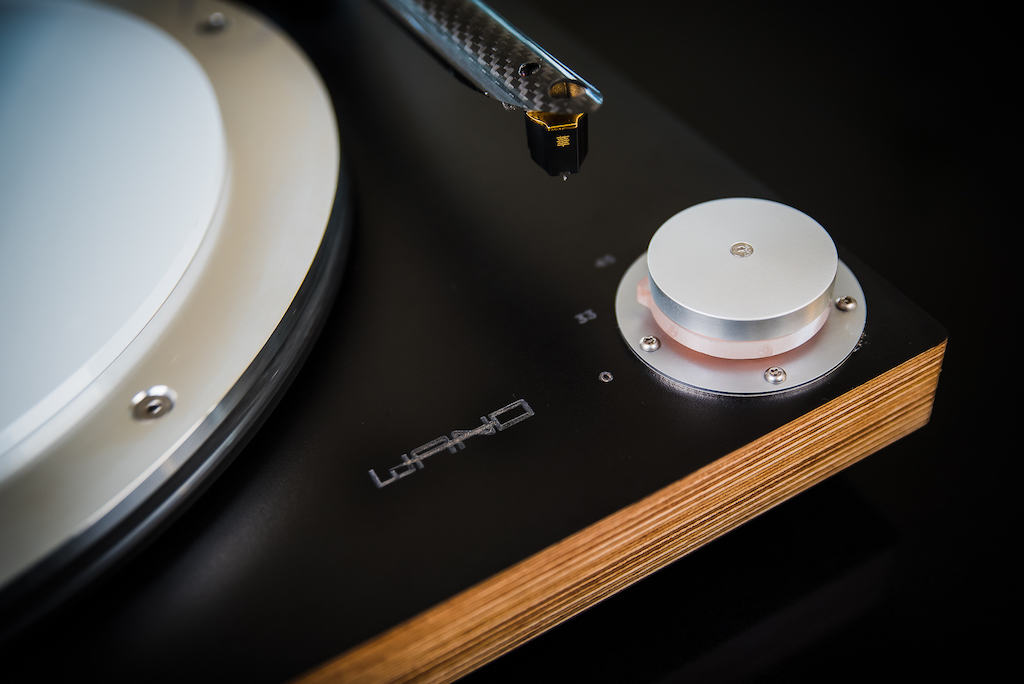
 “When a man holds a thing well-made,” goes the Mutton Birds song, “there’s connection, there’s completeness.” Although intended to apply to a somewhat different context, the lines perfectly sum up this hi-fi hobby and in particular, beholding a well-crafted piece of stereo equipment.
“When a man holds a thing well-made,” goes the Mutton Birds song, “there’s connection, there’s completeness.” Although intended to apply to a somewhat different context, the lines perfectly sum up this hi-fi hobby and in particular, beholding a well-crafted piece of stereo equipment.
I had a Mutton Birds experience when placing the freshly set up The Wand 14-4 Turntable on my Rimu wood Serious Racks stereo rack. Designed by Simon Brown right here in Aotearoa/New Zealand under his Design/Build/Listen moniker, the belt-driven The Wand Turntable is a veritable work of art. If you are familiar with the renowned Wand tonearm, you will know you’re in for something unique with this turntable with its combination of wood, acrylic, aluminium and carbon fibre.
Would you like to support our mission to bring intelligence, insight and great writing to entertainment journalism? Help to pay for the coffee that keeps our brains working and fingers typing just for you. Witchdoctor, entertainment for grownups. Your one-off (or monthly) $5 or $10 donation will support Witchdoctor.co.nz. and help us keep producing quality content. It’s really easy to donate, just click the ‘Become a supporter’ button below.
The plinth is made from about an inch and a half of layered Baltic ply, cut using a computerised router. Before placing the platter on top, you’ll notice the left rear corner has been removed in a rounded fashion and there are several holes of various diameters cut into the plinth. The reason for the wedge shape, according to Simon, is to keep the centre of gravity in line with the three suspended feet, which are placed to be within the playing arc of the cartridge stylus. Because, he says, this is “the stillest point of the suspension”.
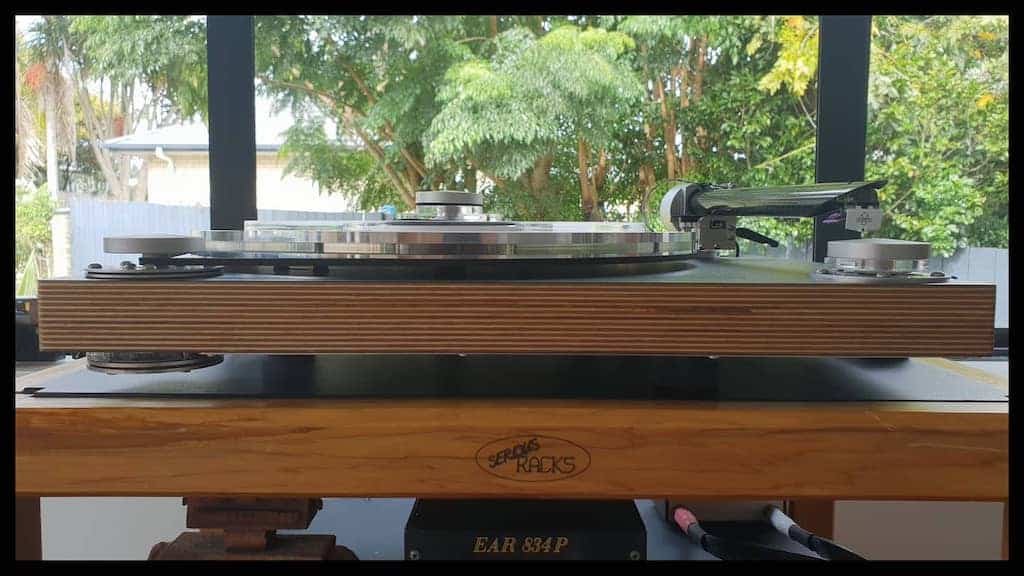
Simon has trademarked this the Zentroidal suspension system. The feet themselves are attractive knurled metal and are attached to individual tensioned silicone cords which effectively suspend the chassis, making it appear to ‘float’. The plinth holes are strategically placed in order to further help with moving the centre of gravity, but they also work to foil any rogue vibrations from the motor.
The servo-controlled DC motor isn’t decoupled from the plinth but is mounted to a stainless steel ‘labyrinth’ plate which serves to divert vibrations, working in conjunction with the suspension system.
The Wand 14-4 Turntable gets its name from the striking 14-inch, 4-layer platter. In order to create an inert foundation for playing records and eliminate vibrations traveling from the motor/belt to the needle, Simon has designed a thing of functional understated beauty. The 14-inch diameter lower three layers of the platter consist of a piece of acrylic sandwiched between two slabs of machined aluminium. The top layer is an 11-inch diameter piece of acrylic on which the record is placed directly (sans any kind of mat) for good anti-vibration coupling between record and platter, with just a small felt circle in the center to protect the label and damp vibrations.
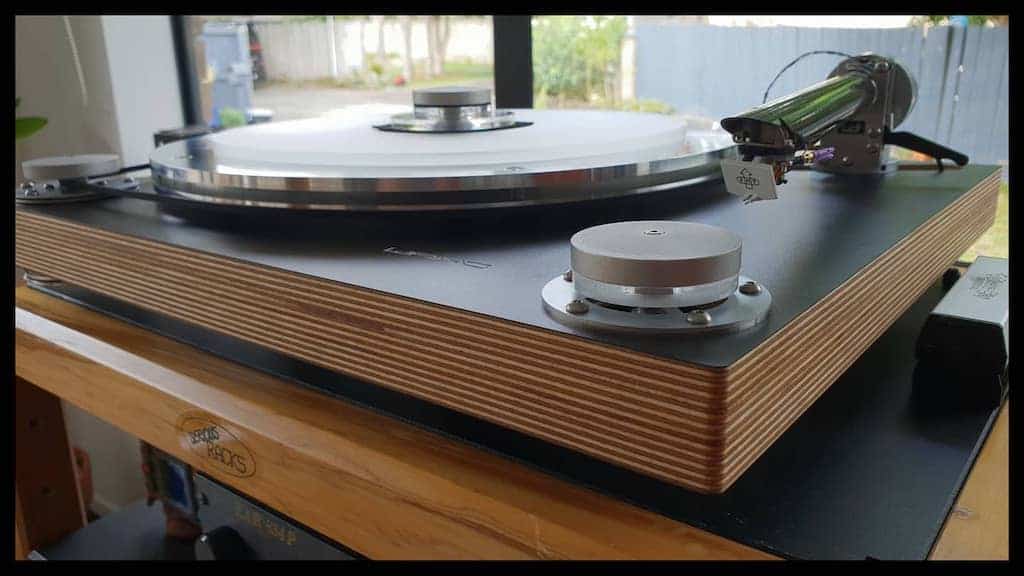
The reason for the extra-large platter diameter is that, according to Simon, a 20% bigger diameter gives 40% more inertia. That is, resistance to any potential change in speed once it is up and spinning at the desired rpm. It also means a bigger drive pully and flywheel system can be used to combat slipping and flutter. The flat rubber belt is made in Switzerland exclusively for the Wand Turntable and in conjunction with the motor, platter and plinth design it has little potential to stretch over time. Speed options are standard 33 1/3 rpm or 45 rpm – no need to change the belt thanks to that motor – and there is an option to add 78 rpm in factory if desired. When you turn the dial to the required speed, it lights up amber from beneath and flashes until the desired speed is reached. An ingenious electronic brake system quickly slows the platter down and stops it for easy side flipping.
Fellow New Zealand company Pure Audio designed the optional The Wand EQ phono stage, which can be added to the package for extra cost, and you’ll see there is adequate space provided beneath the plinth.
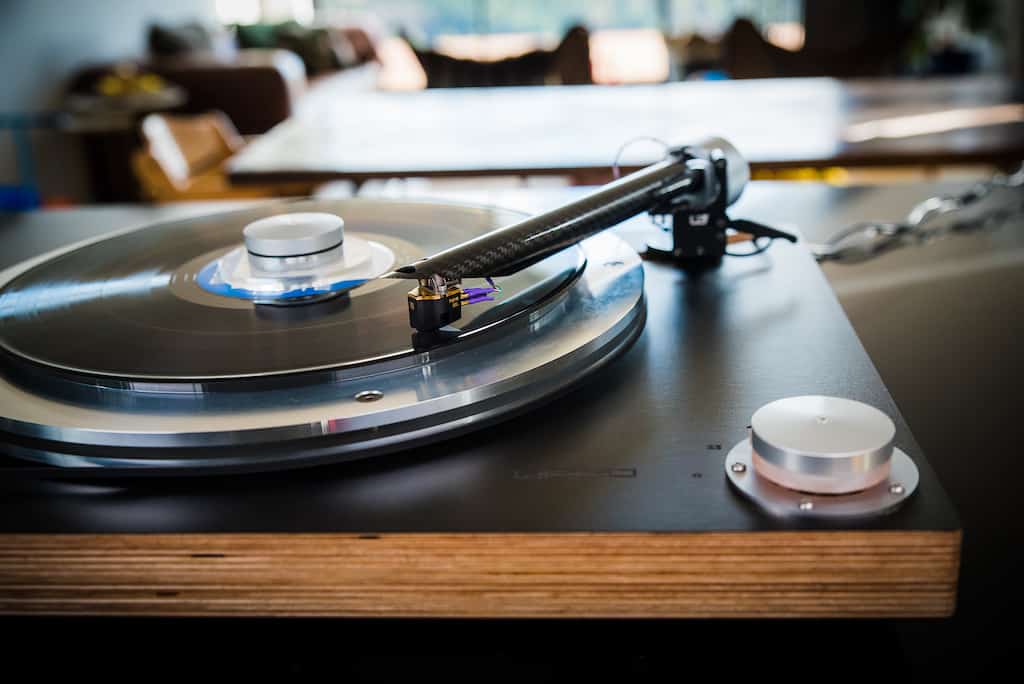
A slot is machined into the plinth which allows for the mounting of your choice of 9.5-, 10.3- or 12-inch tonearms – either from The Wand or those from many other companies. The review sample was shipped with a handsome 10.3-inch Wand tonearm already mounted. The Wand tonearms are black carbon-fibre construction with aluminium housing and weights and can be mounted to almost any turntable with a Wand mounting kit. They are a uni-pivot design, basically meaning they sit – or ‘float’ – on a single precision-machined spiked point. To the uninitiated this may seem flimsy or delicate but, provided the cartridge is perfectly balanced, there is no need for concern. (Simon likes to argue this bearing arrangement is more rigid than gimbal bearings when considered at the scale of vibrations in the record groove.)
With the top of the plinth coloured in matte black, the attractive ply edges, exposed screws and bolts and mixture of aluminium and acrylic, the sturdy 14-4 Turntable has an attractive, slightly industrial, arty feel. It comes extremely well packaged and requires some set up, but the accompanying user guide covers this with clear step-by-step instructions. There is even a link to a YouTube tutorial video where you can watch Simon himself guide you through the process.
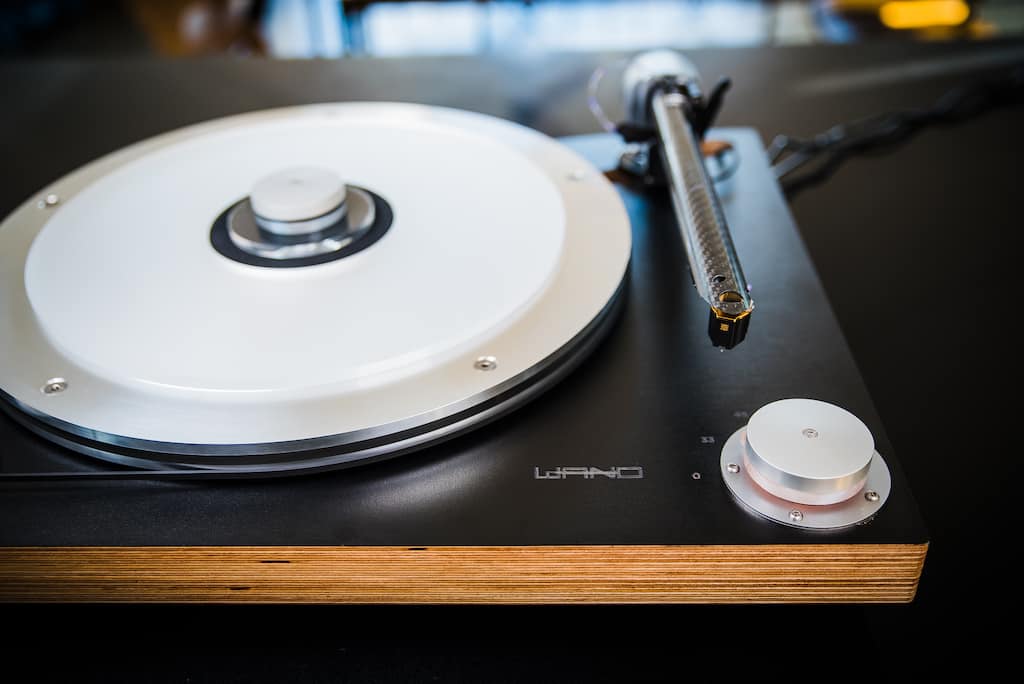
To The Wand tonearm I attached my trusty EMT TSD15-n low output MC (moving coil) cartridge (usually attached to a customised Lenco L75 idler-wheel turntable with an ‘Apparition 12” tonearm). This feeds into an Auditorium 23 SUT and on into my EAR 834P phonostage, running a mixture of vintage and new tubes, with amplification from my Unison Research valve-hybrid integrated amplifier. I also have a Nagaoka MP-110 MM (moving magnet) – a much cheaper cartridge than the EMT, but an excellent device nonetheless. I like to switch between my Reference 3A Floorstanding speakers and a pair of B&W 704s whenever I feel like a change of flavour. The Ref 3As have a refined, sophisticated and holographic nature while the 704s have to my ears that classic, slightly warm British sound. Both have good imaging capabilities and present music across a wide and deep soundstage.
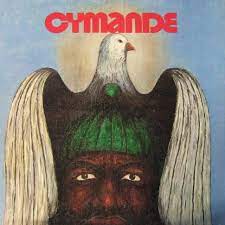 The first record on the platter was Cymande’s classic self-titled first album from 1972 on Janus Records. This nicely recorded, dynamic blend of funk, soul, reggae and jazz gets played regularly in this house because it is rather uplifting and because it sounds so darn good, no matter the format. The album opens with ‘Zion I’ which starts with a wonderful bed of percussion over which bassist Steve Scipio lays a wily groove. Harmonised chant-singing ensues with a vivid blossom of flute later on for good measure. The Wand presented it with the wide soundstage to which I am accustomed, but I found myself especially drawn to the imaging. As I mentioned, both pairs of speakers used for this review are great in this regard, yet now musicians were more sharply focused and precisely placed, with impressive quality of individual timbres. I felt I could look to each instrument and performer and imagine I could see everything they were doing, from their playing technique to the expression on their face. Pure fantasy, I know, but that is what a good hi-fi system can do – make it easier to imagine yourself amongst the action, whether that’s in your room, in the studio or at a gig.
The first record on the platter was Cymande’s classic self-titled first album from 1972 on Janus Records. This nicely recorded, dynamic blend of funk, soul, reggae and jazz gets played regularly in this house because it is rather uplifting and because it sounds so darn good, no matter the format. The album opens with ‘Zion I’ which starts with a wonderful bed of percussion over which bassist Steve Scipio lays a wily groove. Harmonised chant-singing ensues with a vivid blossom of flute later on for good measure. The Wand presented it with the wide soundstage to which I am accustomed, but I found myself especially drawn to the imaging. As I mentioned, both pairs of speakers used for this review are great in this regard, yet now musicians were more sharply focused and precisely placed, with impressive quality of individual timbres. I felt I could look to each instrument and performer and imagine I could see everything they were doing, from their playing technique to the expression on their face. Pure fantasy, I know, but that is what a good hi-fi system can do – make it easier to imagine yourself amongst the action, whether that’s in your room, in the studio or at a gig.
Listening further through the album, the frequency range was well balanced, bass had good clean, punchy extension and the treble never got too intense even with the most enthusiastic of sax blowing. Drums had good tone and cymbals sounded naturally crisp and metallic. Along with imaging, the midrange really impressed me, being clean with a lovely fluid-like nature that is highly involving and satisfying. Vocals, guitars, congas and bongos in the proceeding tracks bloomed confidently from the mix with brilliant timbres and agility.
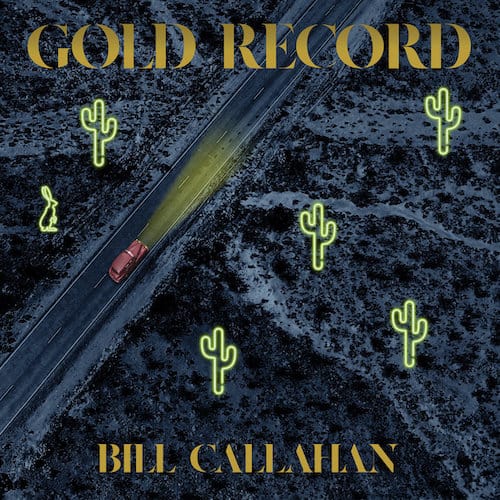 This midrange characteristic was especially evident on albums like Bill Callahan’s sublime Gold Record (2020, Drag City) and Jeff Tweedy’s equally entertaining Love Is The King (2020, dBpm) where strummed guitars sounded gorgeously realistic (guitars are regularly strummed in this house). On Gold Record, Bill Callahan’s mellow baritone hung between the speakers in lifelike fashion, rich and deep with breath-taking clarity and no unnatural boominess. Although there is a rhythm section, it is the acoustic guitars that come to the fore and the Wand/EMT revealed excellent detail, be it strings rattling against a guitar body, the delicacy of individual notes and plucked strings or the sound of fingers sliding up and down the fretboard.
This midrange characteristic was especially evident on albums like Bill Callahan’s sublime Gold Record (2020, Drag City) and Jeff Tweedy’s equally entertaining Love Is The King (2020, dBpm) where strummed guitars sounded gorgeously realistic (guitars are regularly strummed in this house). On Gold Record, Bill Callahan’s mellow baritone hung between the speakers in lifelike fashion, rich and deep with breath-taking clarity and no unnatural boominess. Although there is a rhythm section, it is the acoustic guitars that come to the fore and the Wand/EMT revealed excellent detail, be it strings rattling against a guitar body, the delicacy of individual notes and plucked strings or the sound of fingers sliding up and down the fretboard.
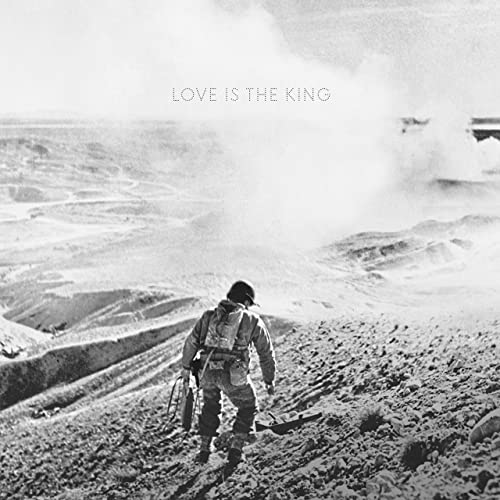 A distinct lack of a noise floor and a relaxed attitude to surface noise seemed to help bring out more distinction in terms of micro-detail and the frequency range. The rhythm section on Love Is The King (Jeff Tweedy on bass and his son, Spencer on drums) had real slam with great well-defined bottom end and fast, clean transients. Tweedy’s customary emotive vocal style had, much like Callahan’s, that clear out-of-speaker quality and presence and his short, sharp Wilco-like guitar solos proved The Wand was adept at treble extension too, which is to say, there was no ear-splitting harshness.
A distinct lack of a noise floor and a relaxed attitude to surface noise seemed to help bring out more distinction in terms of micro-detail and the frequency range. The rhythm section on Love Is The King (Jeff Tweedy on bass and his son, Spencer on drums) had real slam with great well-defined bottom end and fast, clean transients. Tweedy’s customary emotive vocal style had, much like Callahan’s, that clear out-of-speaker quality and presence and his short, sharp Wilco-like guitar solos proved The Wand was adept at treble extension too, which is to say, there was no ear-splitting harshness.
The layering and placement of individual instruments was again excellent. Even in busy passages, all instruments retained their clarity and tonal character. For example, on Loose Fur’s ‘So Long’ from their 2003 self-titled album on Drag City, I enjoyed hearing things popping crisply from the mix – specifically drummer Glenn Kotche’s bashing of assorted metallic objects – beneath charmingly off-kilter yet clearly defined layers of guitar, bass, keys and vocals.
On Money Jungle (1963, United Artists) by Duke Ellington, Max Roach and Charlie Mingus, Ellington’s piano was suitably expressive and life-like in scale with the percussive notes decaying naturally. These notes had natural timbre and were distinguishable individually rather than blurring together as can sometimes happen. On ‘A Little Max (Parfait)’ I could easily hear the different tonalities and resonances of Roach’s drum kit. Cymbal strikes were conveyed with a crashing sense of surprise, displaying metallic and lively timbres. Mingus’ bass, meanwhile, sounded powerful and forceful, driving the tunes along in delicious contrast to Ellington’s finger work. I could clearly make out the delicate sound of his dexterous fingers sliding along the strings.
Elsewhere, Mavis Staples on her 2013 One True Vine album (ANTI- Records), was presented in true glorious form. The projection and emotion of her voice never fails to amaze me, and The Wand really helped bring it out into my room, displaying her earnest, poignant, always spirited style – along with that time-worn gravelly throat – with great precision and breadth. I could hear the subtle textures and inflections within her voice. Back-up singers were clearly distinguishable from each other and the main vocals and placed behind Staples in a believable manner. The rhythm section – featuring Spencer Tweedy on drums – had real attack and that euphoric foot-stomping quality you can get with gospel/soul music.
Metal fared well with The Wand too, with blistering electric guitars stopping just shy of being too severe in the treble range, while bass and drums had exhilarating impact – or solemn plodding impact in the case of stoner metal offerings from the likes of Sleep and Bong. Bill Ward’s drumming on ‘War Pigs’ from Black Sabbath’s 1970 album Paranoid (Warner Bros) filled my wee listening room with such intensity that I had a bout of genuine anxiety – but that’s probably more my fault for compulsively turning the volume way up whenever I listen to that album.
Listening through the same tracks with the Nagaoka MP-110 in place, the experience was no less enjoyable, albeit with the limitations inherent in the cheaper cartridge. The MP-110 is a fun, affordable cartridge, with an elliptical stylus, as opposed to the EMTs super fine line needle. It doesn’t have the full-bodied, impactful sound of the EMT, nor does it have its detailed and vast soundstage. Also, I’ve often detected a sort of “hole” or thinness through the midrange which I can’t quite put my finger on. Yet, attached to The Wand tonearm, it’s never sounded so good. Imaging still had good separation with decent detail levels and the bass was punchy. I soon found myself forgetting about the cartridge altogether and just enjoying the music. I did notice vocals – Tweedy, Staples, Callahan, et al – while distinct from the mix, textured and expressive, weren’t quite as nakedly present as before. Remember, this is compared to a cartridge costing several times the price. For anyone coming in off the street, this would sound amazing. If forced to, I would happily live with this combination without complaining.
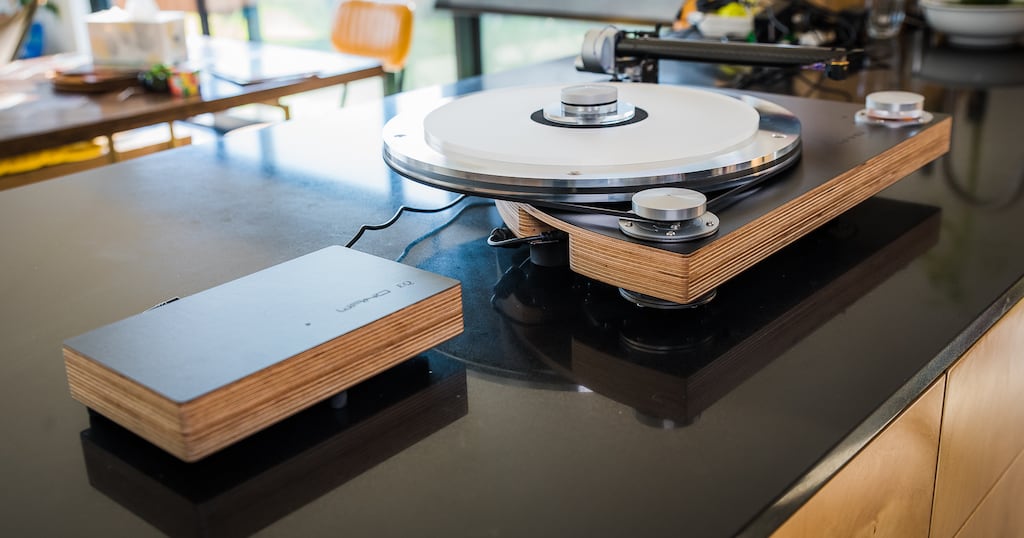
If I had to compare The Wand Turntable to the Lenco/Apparition, I’d say the Lenco is warm and bold whereas the Wand is breezy and refined. Both are capable of good detail retrieval, though The Wand has more of that fluid-like quality and strikingly natural tone in the midrange and just slightly sharper imaging. It is also just a touch punchier around the upper bass, while I detected a slightly wider soundstage from the Lenco.
The Pro-Ject Debut Carbon – on which I usually run the Nagaoka – is a fun, rhythmic little turntable but it lacks the in-depth detail, timbral interpretation and the scale of the other two decks. Don’t get me wrong, it is a great and affordable turntable and gives incredible value for money, but it doesn’t give the same level of seeing into or sense of involvement with a recording by comparison.
When comparing the prices of a few other brands in a similar bracket, you have the popular Rega Planar 8 at $3600, or the Planar 10 at $9200. The Pro-Ject ‘Xtension 9’ comes in at around $5k, including 9” tonearm and a Pro-Ject ‘Classic Evo’ with tonearm and cartridge is $3799. A Thorens TD 1600 (a modern take on the classic TD 160) will set you back around six grand. You can pick up a second hand Lenco for a few hundred bucks and then go hog wild customising it as I did or a fully restored and customised Garrard might cost 3–5k. I wish that I could compare them all but that would be near impossible.
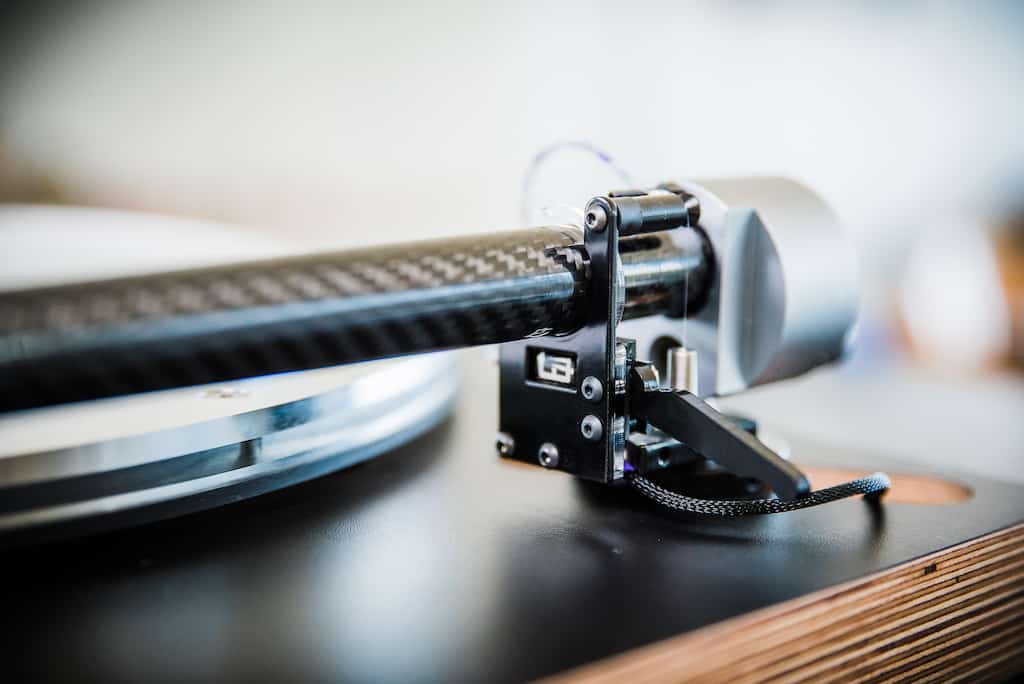
With its careful engineering and attention to noise/vibration elimination, the 14/4 helps better portray what’s there on the record, in the grooves. Detail, dynamics and timbres are more easily conveyed as a result of that solid resonant-free foundation and your chosen cartridge is able to truly shine. Mid or high-end cartridges are great of course, but don’t think a cheaper model isn’t worthy – at least until you can afford something higher up the ladder. The Nagaoka MP-110 performed well, and I’d be perfectly happy if that were all I had.
Simon Brown has produced an exceptional turntable that sounds as good as its looks may lead you to expect. Better, in fact. True, it’s not cheap, but you’re buying an upgradeable, tweakable, wonderfully conceived piece of equipment which, for some vinyl enthusiasts, is likely to be endgame. And it’s homegrown.

